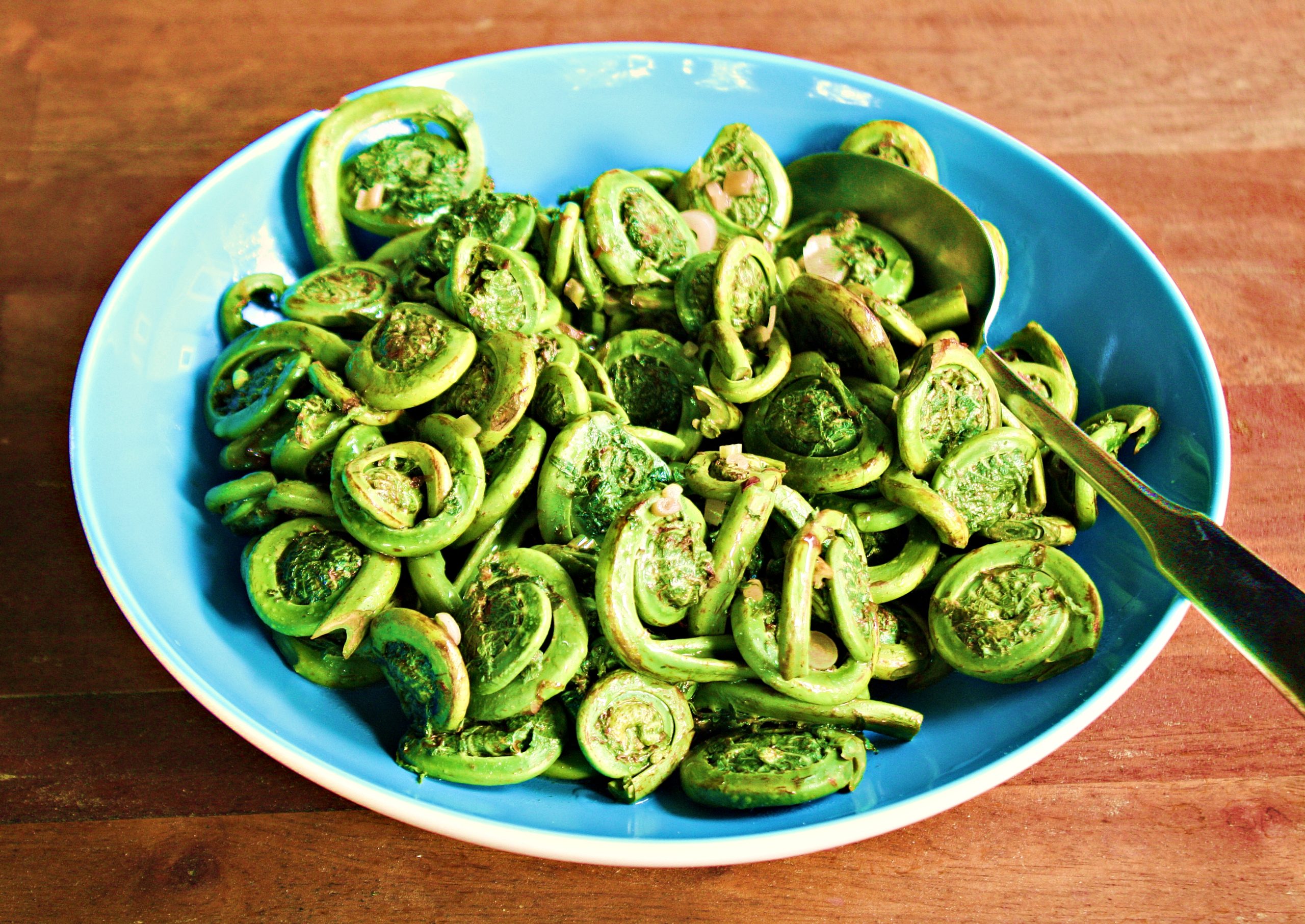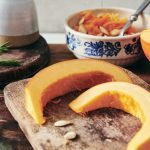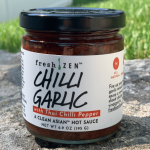Cooking Advice
How to Cook Fiddleheads | Easy Fiddleheads Recipe
Make the most of fiddleheads, spring’s most ephemeral vegetable, in this simple sautéed fiddleheads recipe.

Coffee By Design | Portland, Maine
Photo Credit : Katherine Keenan







I usually find the best time to gather fiddleheads is between Tax day (April 15th) and Mother’s Day. Wait until the flood waters recede along waterways,(rivers, streams, brooks). Always leave some of the plants so they can re-seed themselves. I pick enough to freeze for my out of state house guests. My mother ,Micmac , took us kids out every spring to fish for trout and pick ferns. A wonderful back to basics meal!
One thing about the ostrich fern: it contains an enzyme – thiaminase. If you suffer from a thiamine deficiency, then be sure to cook the fiddleheads until tender. Some chefs unfamiliar with this edible have called for barely blanching them. This doesn’t destroy the enzyme, which can aggravate the deficiency.
Are Fiddleheads only found in New England or are they everywhere. Folks in Maryland and Delaware think I’m nuts!
Do you know where I can order fiddleheads, have see them advised many years ago. Thanks
my parents used to take us kids to mass. near mothers day. ea. of us had a pillowcase & there was 6 of us. the worst part was cleaning them, the best part was easting them. ma used to parboil them and freeze them, we had fiddleheads in the middle of winter. finish cooking to doneness & butter them. GREAT!
Fiddleheads can be found elsewhere, but they grow wild in New England. I am a Vermonter, but now live in Scotland and have planted my own woodland fiddlehead patch in my ‘Vermont woodland” area at the back of my house). The edible fiddlehead ferns is the ostrich fern, if that helps. :j
We have lots and lots in Washington
I just bought them from Sleepers in Me they came in 2 days and look wonderful
If you live in RI…Belmont Market in Wakefield, RI has carried them. I would call to see if they are going to bring in this spring due to pandemic. I know I will be calling them. Last year they were $15.00 a pound.
Lots of wonderful fiddleheads in Alaska:) Always fun to seek out! Thank you for recipe.
I wish i could get them shipped to Florida I miss them so much !
There are a few companies that ship them….. I got fresh lobster meat and fiddleheads from a company called Maine Lobster Now.
I live in Florida too and I am having some shipped to me from Maine at a very reasonable price that includes free 2 day shipping with gel packs to keep them cool. Go to eBay and search for Fresh Maine Fiddleheads. Enjoy!
I live in Idaho and my husband and I traveled to New England many years ago and were delighted with fiddlehead ferns. Last 2 years I purchased a few quarts from a shop from Maine on ETSY.com–great fiddleheads and service. I’ve blanched and then froze them. In a few days I’m going to see if those I froze can be made into pickles (canned)–info from Univ. of Maine Cooperative Extension bulletin #4198.
We had brook trout and fiddleheads every spring when I lived in Maine. Once I ate too many and they gave me a real spring cleaning, if you know what I mean. I’d love to get some now. I live in FL and haven’t had them for years. Yummy!
I live in Florida too and I am having some shipped to me from Maine at a very reasonable price that includes free 2 day shipping with gel packs to keep them cool. Go to eBay and search for Fresh Maine Fiddleheads. Enjoy!
Just picked 5lbs and going to cook tonight also leeks AND Morels.
I admit that I have resorted to buying some at the local co-op, but generally I get out and forage for fiddleheads, ramps, and morels. It’s one more great thing about spring in New England.
Thanks everyone for sharing! Brook trout and wild fiddleheads and ramps
I remember as a very young kid discovering wild fiddleheads growing near a woodsy stream where where we used to play in Glastonbury Ct; I was actually frightened of them upon first sight, I thought they were aliens. Now they’ve become an annual delight and bring a smile and joy every year.